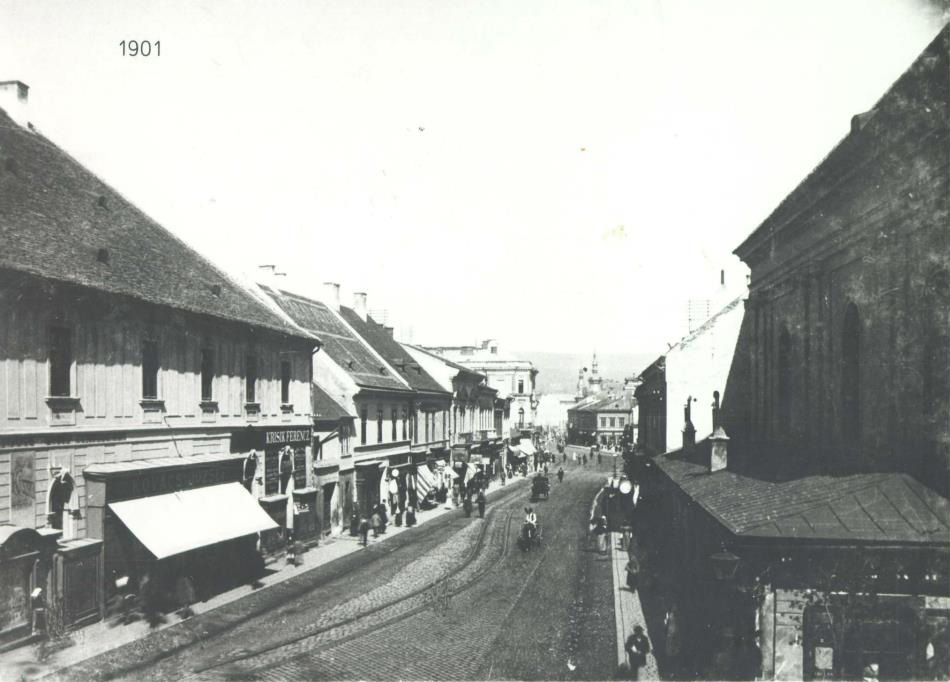Hotel Transilvania (Friend)

Silent witness of the passing of time, Hotel Transilvania has managed to maintain its activity uninterrupted throughout the centuries, keeping its gates open in prosperous pre-/inter-/post-war times as well as during wars, constantly adapting to the political, economical and social conditions of the times.
The hotel with its ancient-medieval resonances stands as a vivid response to new and modern hotels, which excessively display their luxury, but are totally devoid of history and story. We display our historical structure and hospitality, modesty, as an appanage of the middle-class, giving our guests the opportunity to breathe the past, and to begin the journey to the present.
Completely renovated and modernized, the hotel has preserved its old structure and the concept of an inn, only changing travelers with horse-drawn carriages wearing top hats into modern customers carrying a backpack or suitcase, travelling by car or motorcycle, who choose to feel and breathe the air of the ancient and medieval, in between the thick walls of the old building, in an environment of antiquated limestone, vratza and travertine, in a rain of flowers of a delightful color palette, which provide an oasis of greenery to the city in which gardens were replaced with stone, and to stubbornly state that yes, we are here, the survivors of the centuries, as a response to the buildings made of metal and glass which mottled the silent landscape of the old city, and diminished its value.
We are talking about a building, not about palaces, not about an abundance of Gothic and Renaissance styles, not about blazons, but about a building that has the purpose to accommodate the middle class customer, who has represented, represents, and will always represent the majority. Travelers, artists, representatives of all cults and religions, politicians, officials, business men enjoy our hospitality. We proudly say that we are a living relic of the history of Cluj-Napoca.

In the book called Legendele Clujului by Mr. Tudor Sălăgean, historic and director of the Ethnographic Museum of Cluj, pages 71-72, the hotel’s legend is recorded in the article named Un hotel real într-o istorie imaginară – A real hotel in an imaginary history. Hotel Transilvania is also mentioned in The old hotels of Transilvania: heritage tourist resources by Armela Linda Rahovan, as historical monument, having historical relevance and intrinsic story.
Built on the headquarters of the governor of Dacia Porolissenis, at a footstep away from the place the legend says Decebal committed suicide, near Canalul Morii, at Poarta Podului, at the Eastern limits of Napoca, the hotel defies time and silently witnesses the spectacle offered by the passing of years and centuries.
Because we are part of the city’s history, we feel the need to point out some historical data referring to the evolution of the city that we are proud of, Cluj-Napoca and the street we are located on, Regele Ferdinand.
Dacian settlement name Clus, later Napuca, subsequently becoming the romanian municipality Napoca , comes to the attention of the Austro-Hungarian Empire, which after the Tatar devastation, sets the bases for the first enclosure of the medieval fortress between 1200-1405, which became named Kolozsvár (in hungarian), Klausenburg (in german). On the 19th of August 1316, by a degree of the Hungarian King Károly Róbert of the House Anjou, the settlement receives the status of a royal city Civitas Regal, also known to be called the treasure city. Built on 7 acres, the first medieval enclosure of Cluj, surrounded by 4 gates, begins to exist.

Strada Podului (romanian) – Platea Pontis, Híd Utca (hungarian), the name of the first accredited streets of the old city is mentioned for the first time in 1362. The street later became named Wesselényi Miklós (Hungarian statesman and scientist) street, Calea Ferdinand street (1923-1949), named after the second king of Romania who completed the unification process of Romania in 1918, Gheorghe Doja (Dózsa György) street (1949-1999), named after the leader of the great uprising of 1514, and Regele Ferdinand street after 1999. The second phase of construction of the old city began in 1405, adding 45 acres and 18 towers and bastions to the medieval city. The hotel building is most likely dated from the period when the street was first accredited, functioning as an inn, perhaps for the guests of Matthias Corvinus, later to be transformed into a hotel.
In the 1800s, it is joined by 3 other hotels on the same street, the street also being called Strada hotelurilor (the street of the hotels) at the time. With the inauguration of the Train Station in 1870, personalities and traders started to arrive to the city, and therefore Wesselényi Miklós street had developed even further. While the other 3 hotels have closed their gates, our hotel remains the only relic of the city’s past.
Just as the street’s name has undergone changes throughout the years, the hotel’s name was changed as well. In the glorious years of 1870 the hotel was called “Regina Angliei” (The Queen of England), a more uncommon name, which is also mentioned in Bram Stoker’s novel “Dracula”. Subsequently, the hotel was called Transilvania, then Vladeasa, and then Transilvania again, maintaining the same historical and sentimental values represented by this blessed area of land called Transilvania.

CLUJ-NAPOCA, ROMANIA
Hotel Transilvania (Friend)
Str. Regele Ferdinand 20,
Cluj-Napoca, Romania
Tel: +40-264-594429
Tel: +40-264-294427
Info: generalmanager@hoteltransilvaniacluj.ro
Website: www.hoteltransilvaniacluj.ro
Facebook: Hotel Transilvania Cluj-Napoca
Linked In: Hotel Transilvania







